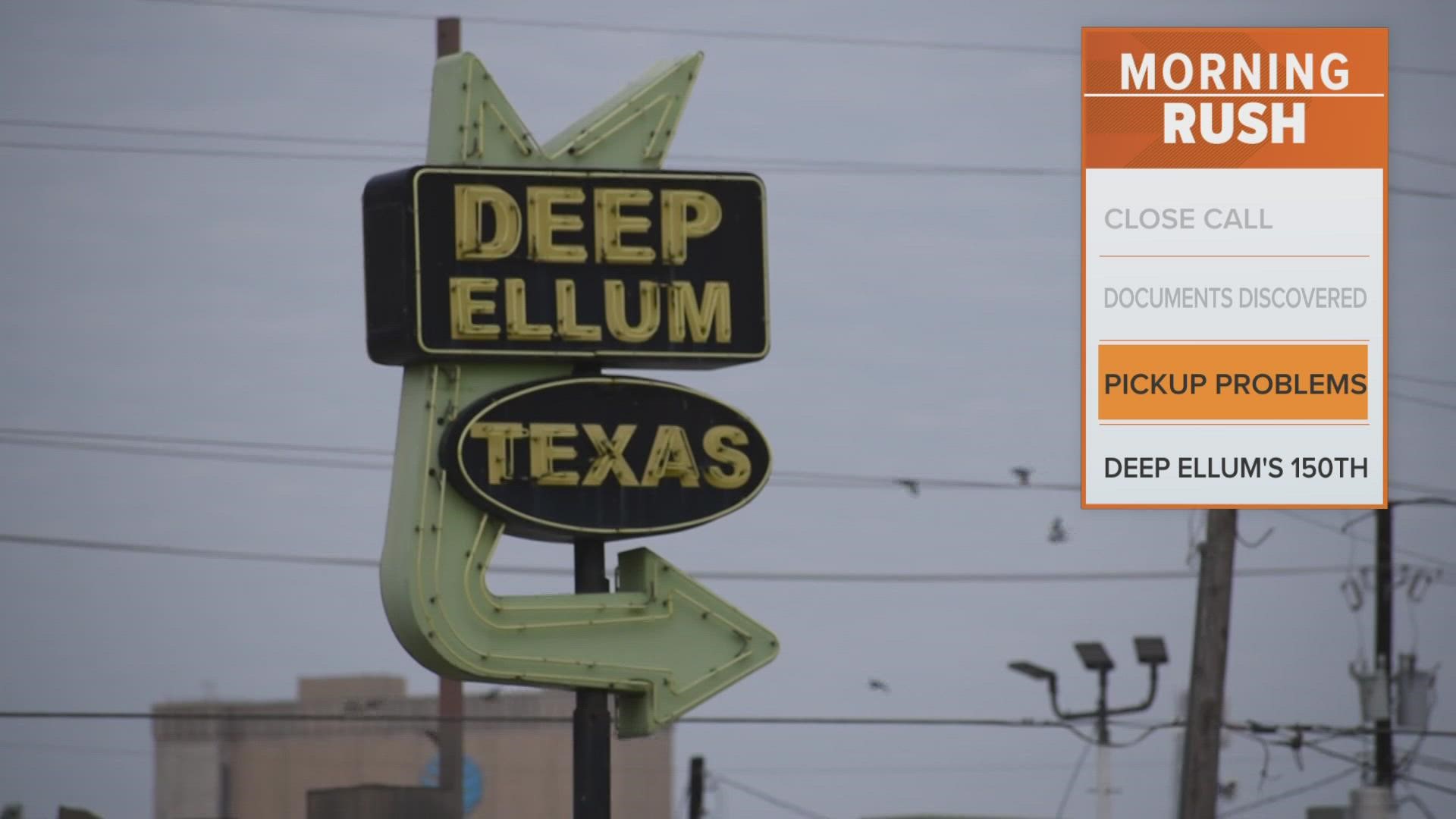DALLAS — As Deep Ellum celebrates a historic anniversary, the Dallas entertainment district could also soon add a prestigious, historic title to its name.
On Jan. 13, 2022, the Texas Historical Commission’s State Board of Review approved the neighborhood’s nomination application to become a historic property in the organization's National Register of Historic Places. The Federal Department of Interior will now make a final decision on the designation.
Unlike the majority of the nominations the board reviews, Deep Ellum's application wasn't an application for a single building; rather, this application included 268 buildings in all.
Deep Ellum owes the bulk of its history to the opening of a rail line coming to Dallas on July 16, 1872, which is why this is the year being celebrated as its 150th birthday, and why the Deep Ellum Foundation chose to submit the nomination with help from Preservation Dallas and the form was prepared by HHM & Associates, Inc.
In the application, the organizations said an overwhelming majority of buildings retain sufficient integrity to contribute to the historic character of the district.
Of 281 resources in the district, 95% of them are considered to be "historic-age" and were built by 1973, according to the application, which also said the majority of these resources in Deep Ellum were built between the 1920s and 1950s.
To learn more details about the nomination, which included the 156-page application, you can click here.


“The Texas Historical Commission board evaluated the Deep Ellum Historic District nomination on Friday," Director of the Communications Division of the Texas Historical Commission Chris Florance said in a statement to WFAA. "They recommended that the State Historic Preservation Officer (executive director of the THC) approve the nomination to send to the Federal Department of the Interior's National Register of Historic Places. It's now in the federal government's hands whether they will add it to their listing.”
Anyone can nominate a historic property for inclusion in the registry, according to the Texas Historical Commission.
There are a variety of grants and tax incentive programs available from the federal government for maintaining National Register-listed properties, the Texas Historical Commission told WFAA. Some building owners become eligible for federal income tax credits if they undertake rehabilitation projects that meet certain standards.
According to the Texas Historical Commission, properties that contribute to the historic district can potentially be granted a variance from building codes and are eligible for the same financial incentives and protections afforded to individually listed properties. Plaques are also likely to be installed throughout the neighborhood should the Department of Interior approve the application.
Other sites in North Texas already in the registry include Dealey Plaza, Highland Park Shopping Village, the Porter Farm in Terrell, Samuel Rayburn's House in Fannin County and the Texas Centennial Exposition Buildings in Dallas.
To see a full list of the National Register of Historic Places, you can click here.

